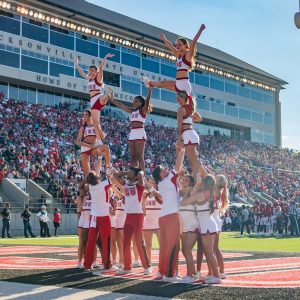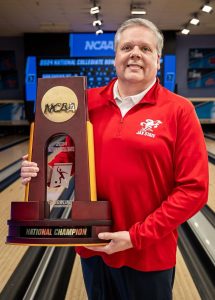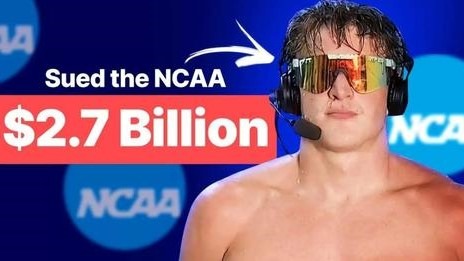JACKSONVILLE – College athletics are clearly in the middle of a wilderness with no clear path out.
The transfer portal and name, likeness and image deals both created upheaval within the industry.
Now comes direct pay.
John Zenor of the Associated Press reported that Iowa State has “scrapped plans for a new wrestling facility” and Texas A&M “laid off a dozen or so athletic staffers,” perhaps signs of things to come as direct pay will soon become a thing in the NCAA.

That’s the future set through a revenue-sharing model outlined in last week’s $2.8 billion antitrust settlement of House v. the NCAA. According to the plan, millions in revenue soon starts going directly to the athlete.
“At the end of the day, this is an economic earthquake within the system,” Andrew Zimbalist, economics professor emeritus at Smith College, told AP. “And the system is in a very uncertain and risky and volatile state right now.”
The antitrust lawsuit put the Power Five Conferences – ACC, Big Ten, Big 12, Pac-12 and SEC — on the hook for millions. That group is now essentially the Big Four with the Pac 12 now down to two teams. Meanwhile, smaller programs and conferences are left wondering what’s in store for them.
“It’s just so much unknown for us,” Jacksonville State Athletic Director Greg Seitz told 256 Today. “I think certainly when you’re at the Power Five or Power Four level, it’s gonna have much more impact (in pure financial figures) because they’re the ones honestly generating so much revenue.

“So, how does that end up getting distributed back to the kids and stuff? Everything that I’ve seen, and look, there’s still a lot that we don’t know about. And so we’re still just trying to learn and get as much information as we can.”
The effects on the money-making behemoths, while yet to be seen, will undoubtedly trickle down to smaller FBS and FCS Division I conferences like CUSA (Jax State), the SWAC (Alabama A&M) and the ASUN (University of North Alabama).
A revenue-sharing model outlined in last week’s settlement proposal from the NCAA and the five largest college conferences would allow schools to each provide up to $21 million annually to athletes or up to 22% of the average power league school’s annual revenue.
The impact will obviously greatly influence budgets down the line.

“Absolutely,” Seitz said. “Probably, proportionally, it may even have a bigger impact on us or schools like us than it will like the Power Five because we don’t generate the revenue like the Power Five schools do.
“So, if you’re taking 22 percent of $175 million it’s a lot more money but, when you’re taking 22 percent out of $25 million it makes a huge impact.”
A main factor in budget discussions from top to bottom moving forward will be Title IX, which ensures women’s athletics get a fair share when the pie is divided. That could lead to what has already happened with wrestling at Iowa State and staffing at Texas A&M.
“I think there’s just too many unknowns out there,” Seitz said. “Obviously we don’t want to cut back on sports or opportunities for our student athletes to have that chance to play because athletics does so much for not only an individual but also for your school and community.
“It just gives a lot of people a lot of opportunities to participate and have that college experience.”
A naive idea being kicked around is that direct pay from the school will take NIL out of the hands of boosters.

That’s highly unlikely to ever happen but one thing very well might – playing sports might not be the only college experience in danger. The number of scholarships allowed by each school is currently in NCAA crosshairs.
“Honestly, a lot of people may not be able to go to college without the help of a scholarship on the athletic side,” Seitz said. “There’s just too much unknown as of right now for us to kind of see where we are.
“You hear talk about this House settlement, but what nobody has really talked about is how does it impact Title IX? That is to say, when you’re having to pay 50 on the male side, does that equate to paying 50 on the female side? We just don’t know.”
Don’t miss out! Subscribe to our email newsletter to have all our smart stories delivered to your inbox.



